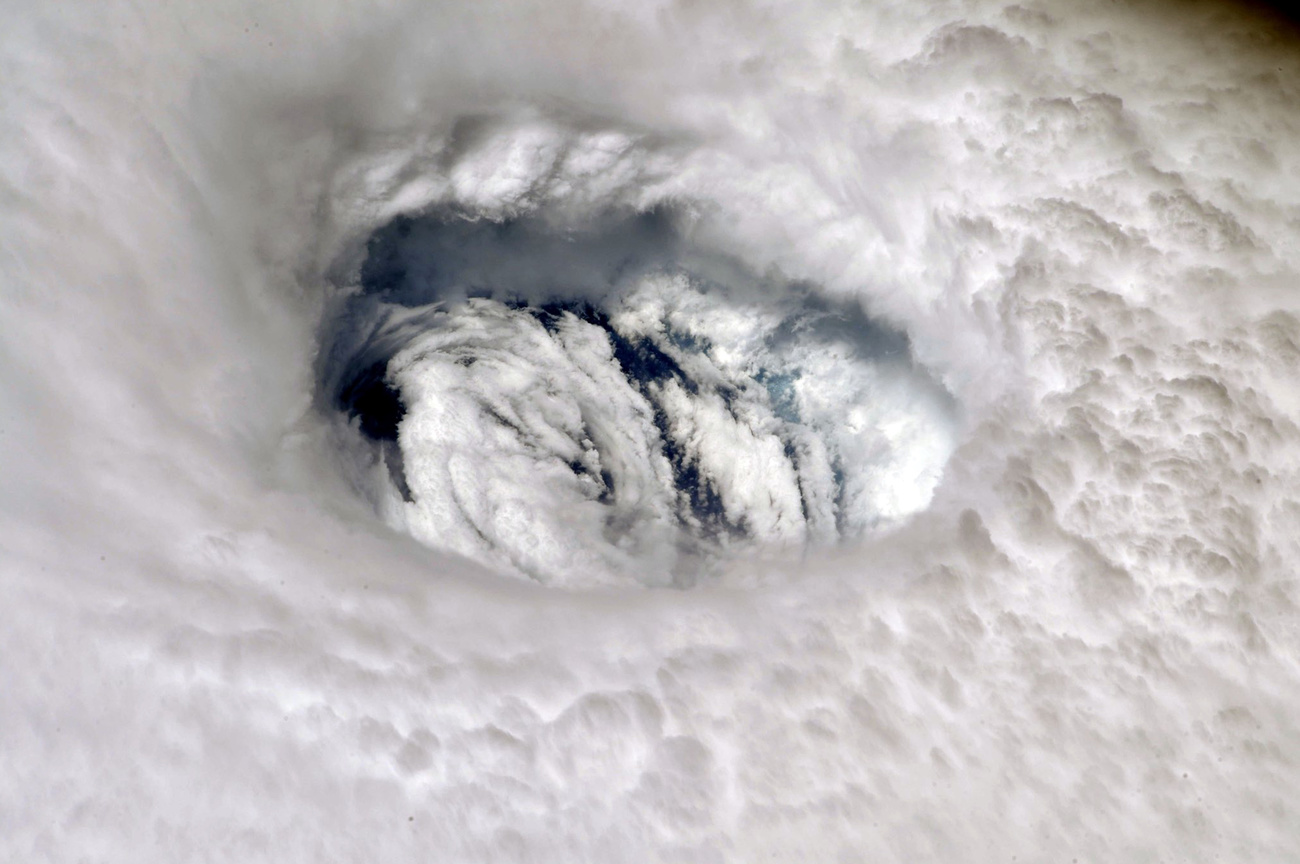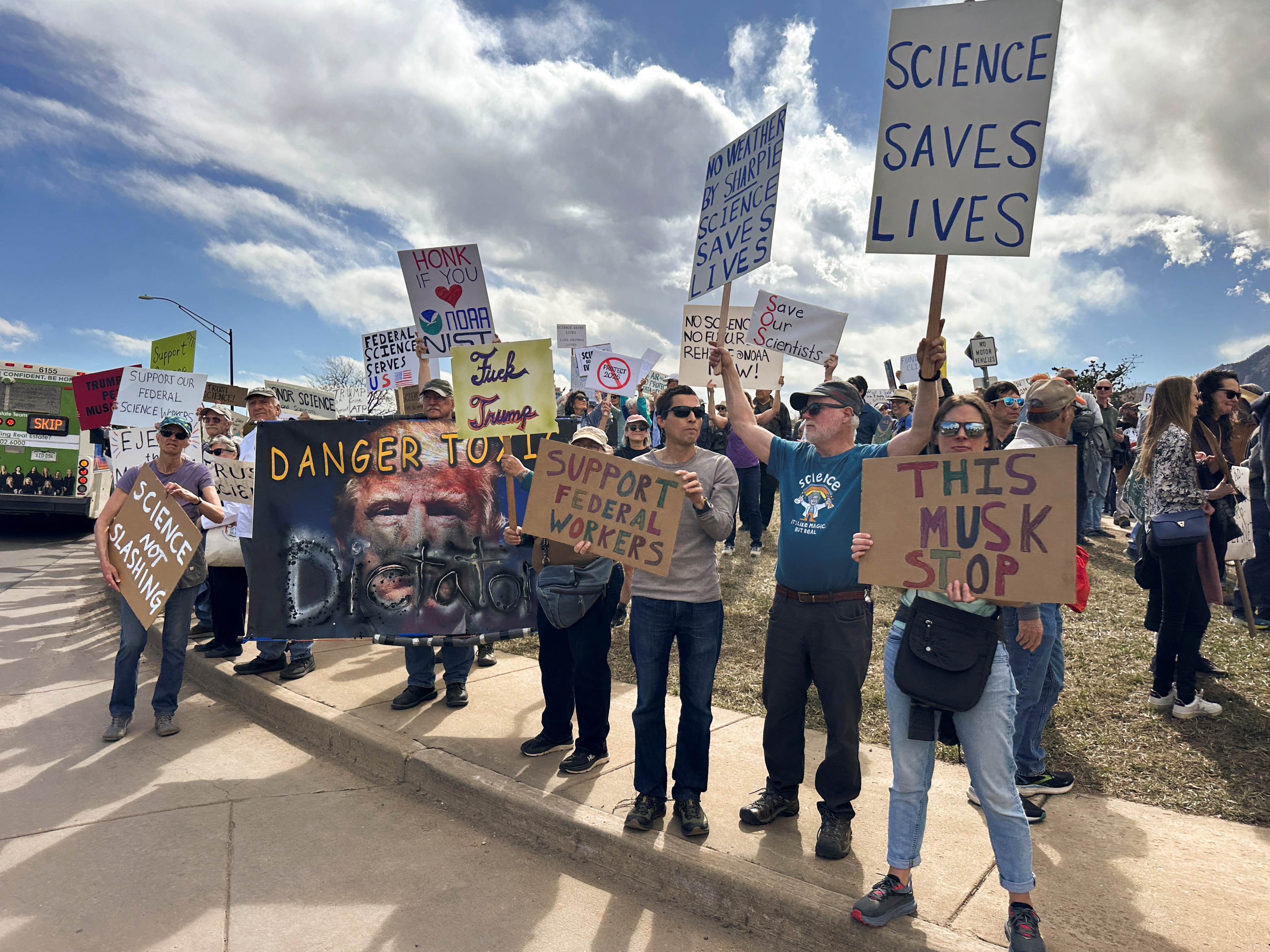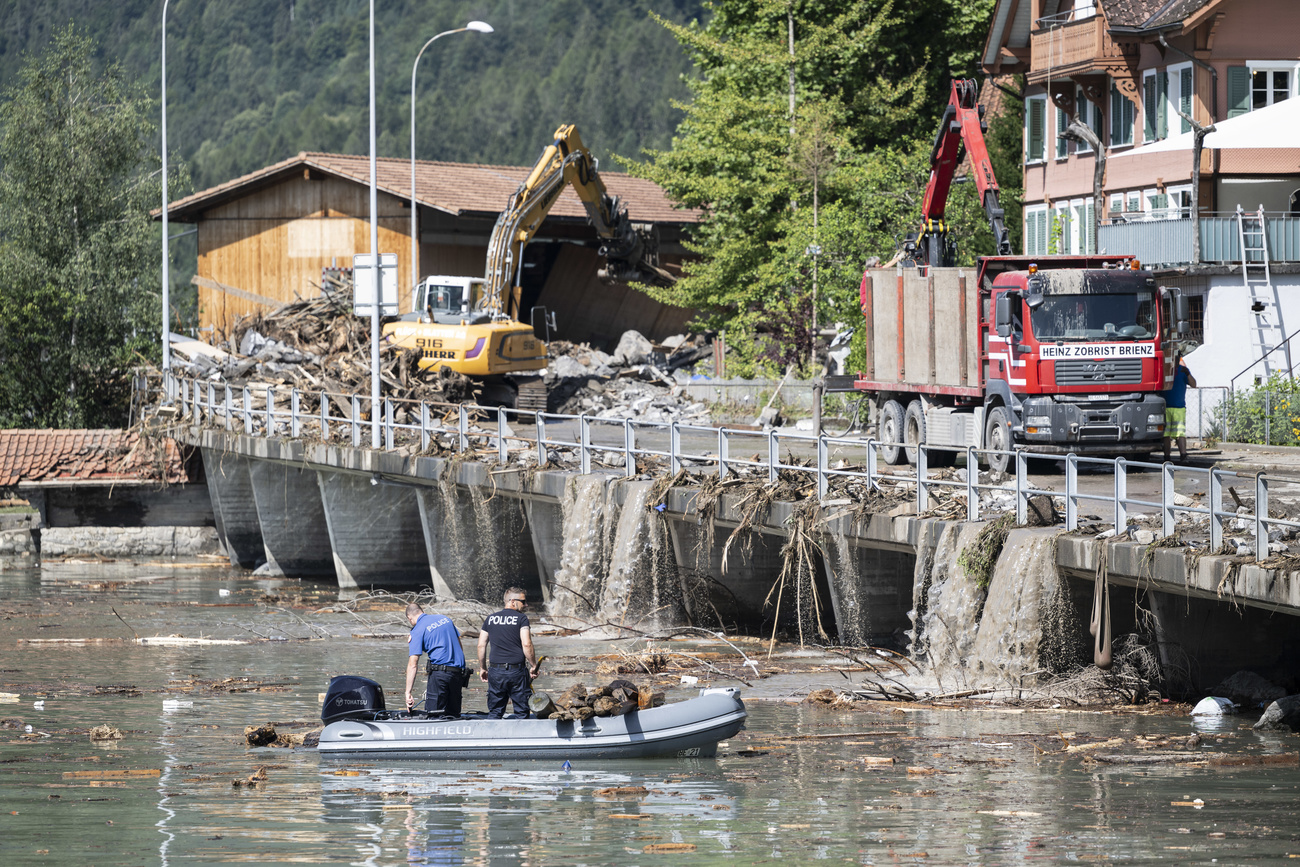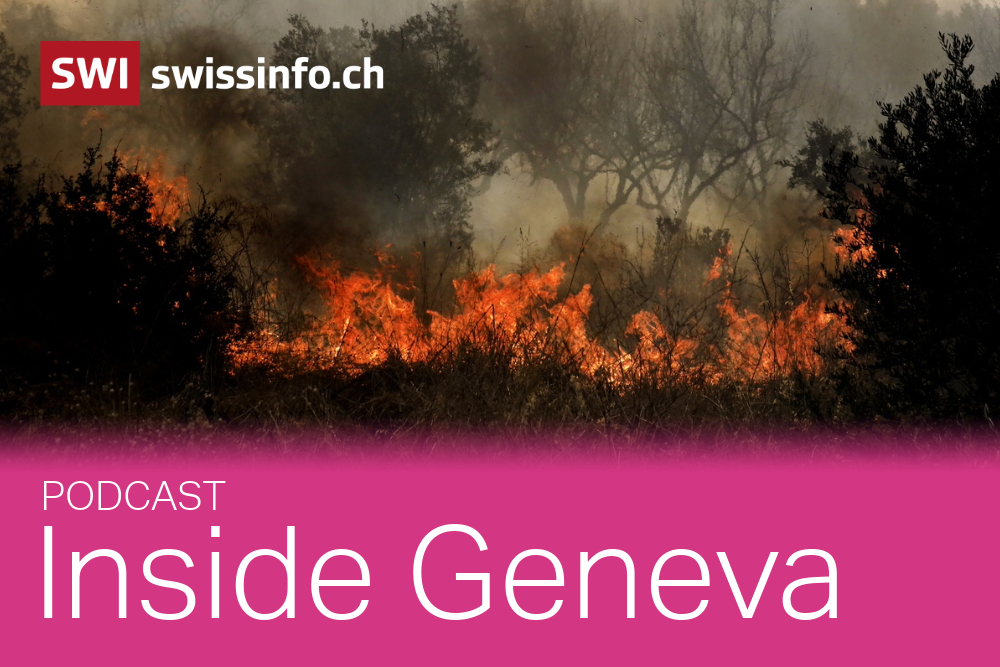
What Trump’s climate science crackdown means for global forecasts

US President Donald Trump has launched an unprecedented assault on environmental and climate initiatives. This includes cuts to US scientific agencies that, if enacted, would hurt other nations’ abilities to accurately forecast the weather, warn scientists and the Geneva-based World Meteorological Organization (WMO).
Trump’s second term has begun with a dizzying array of executive orders, directives, firings and policy changes, with the environment firmly in the president’s sights. One of his first acts was to start withdrawing the US from the Paris Agreement, the international climate pact, for the second time.
But Trump has also targeted scientific research in sweeping government job cuts at federal agencies like the National Oceanic and Atmospheric Administration (NOAA), whose research work and data is invaluable to the Geneva-based World Meteorological Organization (WMO) and weather forecasting agencies around the world.
This is a chaotic time for NOAA, one of the world’s premier research agencies responsible for weather forecasting, climate analysis and marine conservation. Over 1,000 scientists and experts have been fired or resigned from the agency and 1,000 more staffers are expected to be removed. The reductions would representExternal link nearly 20% of NOAA’s approximately 13,000-member work force.

NOAA, which also houses the US National Weather Service, faces further cuts in coming fiscal years. A proposalExternal link released by the White House on May 2 calls on Congress to cut the agency’s budget by at least 25% – by $1.5 billion – for 2026. The Trump administration also wants to eliminate NOAA’s Oceanic and Atmospheric Research division, and scale back on satellite and other monitoring and modelling resources.
The cuts are part of an effort to halt all spending on former US President Joe Biden’s so-called “Green New Deal” initiatives and to target specific NOAA programmes that the Trump administration argues have funded efforts to “radicalise” students and “spread environmental alarm”.
Cuts to weather forecasting will have a global impact
Critics warnExternal link the reductions may have a profound impact on the American public and weather forecasting capacities more generally, with the fewer people keeping their eyes on what’s going on.
“National Weather Service staff will have an impossible task to continue its current level of services,” five former directors declared in an open letter. “Our worst nightmare is that weather forecast offices will be so understaffed that there will be needless loss of life.”
They would be felt globally, too.
The WMO, which this year celebrates its 75th anniversary, highly values US leadership in meteorology, climate, hydrology, oceanography and atmospheric science. NOAA is a key member and contributor to WMO and its global data exchange and observation networks that are shared with 193 countries worldwide. The US traditionally contributes around $18 million (CHF15 million), 22% of WMO’s regular budget.
The UN agency says it is too early to say whether specific programmes are affected by US cuts. But the stakes are high.
“The US provides vital weather, climate and water data and expertise which are vital to national and global well-being in our interconnected world,” WMO spokesperson Clare Nullis told SWI swissinfo.ch.
For example, the US provides up to a quarter of the flow of meteorological satellite information used in operations globally. It also provides 3% of globally-shared land surface meteorological observations and 12% of so-called upper air radiosonde profiles, which are the basic ground-based observations needed for global weather prediction.
NOAA’s WMO-recognised centres, satellites, studies, and intelligence track severe weather across Europe. They are used to coordinate disaster response in the Caribbean and protect public safety against tropical cyclones. The US National Hurricane Center in Miami, for example, provides forecasting data that has “saved thousands and thousands of lives”, says WMO. NOAA’s centres also monitor deforestation and the effects of the climate crisis in the Amazon rainforest and support key economic sectors like aviation and agriculture both in the US and around the world.

‘Broadside attack’ on climate research
Scientists around the world have been more forthright about the impacts of the cuts. Around 3,300 experts from 34 countries signed an open letterExternal link to congressional leaders and US Commerce Secretary Howard Lutnick, urging them to halt the “ongoing assault” on NOAA.
They denounce the relentless attacks against NOAA and other leading US science institutions which they say upend decades of invaluable scientific research. The cuts would also signify an abdication of US leadership in climate science, and an erosion of US status as a scientific powerhouse, they claim.
Cornell University climate scientist Natalie Mahowald, one of the signatories of the open letter, calls it a “broadside attack” on climate research.
“They are threatening to cut weather station data collection and weather forecasting, which means the forecasts will get worse as well as losing long term datasets we need for climate. In addition, all the research in NOAA on climate is being threatened, both those that occur at NOAA facilities as well as funding to universities,” she told SWI. “All efforts of WMO will be impacted.”
Jacopo Riboldi, an environmental scientist at the Swiss federal technology institute ETH Zurich, also warns of the negative consequences for weather forecasting, the WMO and global climate research.
“The cuts of the Trump’s administration will lead to an incredible loss of expertise… valuable data used by scientists across the world risks becoming inaccessible, and software unmaintained and malfunctioning. This will impact future research, as tools need to be re-developed and data re-collected,” he said.
>>Listen to the latest episode of the “Inside Geneva” podcast that discusses the future of climate cooperation without the US.

More
Inside Geneva: pandemics and climate change, can multilateralism still work?
WMO plays a crucial role in promoting climate research and in coordinating public-private partnership in the weather sector, says Riboldi. An “uncollaborative and disruptive” US would have detrimental consequences across the whole globe and potentially undermine the core values of the UN agency, he added.
Degraded weather forecasting
Various news reportsExternal link have highlighted how the cuts at NOAA risk making America’s weather forecasts less reliable. The knock-on effects worry meteorologists in other countries.
Australian scientists have warnedExternal link that US staff cuts and a freeze on international collaborations would have a “chilling effect” on climate science and may “severely degrade” Australia’s ability to accurately forecast the weather.
The Meteorological Society of Japan saysExternal link it is “deeply concerned” by the reductions and consequences “not only for the United States but also for the international weather agencies”.
MeteoSwiss, the Swiss national weather service, uses US weather forecasting and analysis indirectly via the global exchange of data. “If this exchange is limited, less data would be integrated in weather models. In theory this would have an influence on the quality of forecasting,” says Marco Gaia, head of forecasting at MeteoSwiss.
>>A look at how scientists are counting on a growing constellation of satellites and AI to give more accurate insights into greenhouse gas emissions.

More
How satellites and AI can help check the pulse of our warming planet
Joyce Kimutai, a Kenyan researcher at the Grantham Institute for Climate Change at Imperial College London, finds the US mass layoffs and funding cuts “deeply troubling”.
“For decades, NOAA’s contributions have improved the accuracy of forecasts, advanced our understanding of extreme weather trends, and informed climate projections globally. Its Earth observation systems, satellite programmes, and ocean monitoring networks serve as the backbone for numerous international collaborations. A weakened NOAA – whether through loss of staff, reduced data-sharing, budget cuts or curtailed scientific output – threatens to diminish the quality, consistency, and availability of this vital information,” she told SWI.
Kimutai, who also works for the Kenya Meteorological Department, said the implications were serious for her homeland, which is highly vulnerable to extreme events such as floods and droughts.
“If NOAA reduces its capacity or restricts access to its data and modelling tools, there will be knock-on effects in our region – particularly for long-range and seasonal forecasts that are crucial for planning and disaster preparedness,” she noted.
> Read this article to find out more about the impact of US cuts on the humanitarian aid sector.

More
Trump’s aid cuts plunge humanitarian sector into existential crisis
Edited by Gabe Bullard/vdv

In compliance with the JTI standards
More: SWI swissinfo.ch certified by the Journalism Trust Initiative


















![The four-metre-long painting "Sonntag der Bergbauern" [Sunday of the Mountain Farmers, 1923-24/26] had to be removed by a crane from the German Chancellery in Berlin for the exhibition in Bern.](https://www.swissinfo.ch/content/wp-content/uploads/sites/13/2025/12/01_Pressebild_KirchnerxKirchner.jpg?ver=1ea8acae)












You can find an overview of ongoing debates with our journalists here . Please join us!
If you want to start a conversation about a topic raised in this article or want to report factual errors, email us at english@swissinfo.ch.